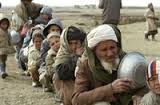In the early 1980s, American and Russian scientists working togetheroutlined a stark vision of the Cold War future. In a battle between the twosuperpowers, smoke from fires ignited by nuclear explosions would be so densethat it would block out the sun, turning the earth cold, dark and dry, killingplants and preventing agriculture for at least a year.
This dystopia became known as nuclear winter.
We haven’t heard much about this apocalyptic future in recent years. Butthe research into the destructive potential of a war involving nuclear weaponshas continued. Even with the reduced nuclear arsenals that the United Statesand Russia agreed to in 2010, we have the ability not only to set offinstantaneous destruction, but also to push global temperatures below freezing,even in summer. Crops would die and starvation could kill most of humanity.
But it is not just the superpowers that threaten the planet.
A nuclear war between any two countries using 100 Hiroshima-size atombombs, less than half of the combined arsenals of India and Pakistan, couldproduce climate change unseen in recorded human history.
This is why we should celebrate the recent agreement with Iran, which may stop it from producing a nuclear weapon. And it is also why weshould look with deep alarm at North Korea’s recent launching of a rocket to put a satellite in orbit, in what is believed to be an effort to develop an intercontinentalballistic missile.
Nine countries have nuclear arsenals, with an estimated total of 15,695 weapons, according to the Ploughshares Fund, a global securitiesgroup. About 94 percent are held by the United States and Russia. Except forNorth Korea, the other nuclear nations have each kept their arsenals at roughly100 to 300 weapons. All have the destructive power to alter the globalenvironment.
These weapons have not been a deterrent to war or aggression. But even ifyou think they can be, how many would you have to use? The answer is, probablyone.
There are simply too many nuclear weapons in the world, by as much as afactor of 1,000, for anyone, anywhere, to be safe from the potential effects ofeven a small war. The chance that nuclear weapons would be used by mistake, ina panic after an international incident, by a computer hacker or by a rogueleader of a nuclear nation can be eliminated only by the removal of the weaponsthemselves.
We were among the scientists involved in the initial research thatdiscovered the potential for nuclear winter. More modern and advanced climatemodeling has confirmed the initial findings and shown that the effects wouldlast for more than a decade. The reason is that smoke from nuclearconflagrations would rise as high as 25 miles into the atmosphere, where itwould be protected from rain and take at least 10 years to dissipate.
In more recent research, we looked at the potential impact of a nuclear warbetween India and Pakistan, with each country detonating 50 Hiroshima-sizebombs. These explosions would produce so much smoke that temperatures wouldplunge, shortening growing seasons and threatening the global food supply.
Our calculations, based on how crops grow in different weather, showed thatwheat, rice, corn and soybean production could be reduced by 10 percent to 40percent overall for five years. The ozone layer would also be depleted,allowing more ultraviolet radiation to reach the earth’s surface.
We hope this continuing research on the effects of even a so-called smallnuclear war will highlight the threat to the planet in the same way thatvisions of a nuclear winter did more than three decades ago for Russian andAmerican leaders, when the total number of nuclear weapons peaked at about70,000.
As Ronald Reagan put it in 1985, “A great many reputable scientists aretelling us that such a war could just end up in no victory for anyone becausewe would wipe out the earth as we know it.” Mikhail S. Gorbachev, the lastleader of the Soviet Union, echoed Reagan’s comment in an interview in 2000:“Models made by Russian and American scientists showed that a nuclear war wouldresult in a nuclear winter that would be extremely destructive to all life onearth; the knowledge of that was a great stimulus to us” to reduce the size ofnuclear arsenals in both countries.
The Obama administration’s goal is to work for the elimination of nuclearweapons, with no specific timetable. But President Obama does not need a treatywith the Russians to take this action. He can just follow the lead of PresidentGeorge H. W. Bush, who unilaterally reduced America’s nuclear arsenal as theSoviet Union was disintegrating.
With less than a year left in office, President Obama could add to his legacyby sending a similar signal to the Russians today. We could reduce our arsenalfrom roughly 7,000 weapons to 1,000, eliminating land-based missiles andoutlining plans to further reduce air- and submarine-based missiles.
Mr. Obama said himself in 2009 that “the existence of thousands of nuclearweapons is the most dangerous legacy of the Cold War” and that the UnitedStates, as the only nation to have used these weapons, had “a moralresponsibility” to seek a world without them. “We have to insist,” he said,“‘Yes, we can.’”
Alan Robock is aprofessor of environmental sciences at Rutgers University. Owen Brian Toon is a professor of atmospheric and oceanic sciences at the University ofColorado, Boulder.

